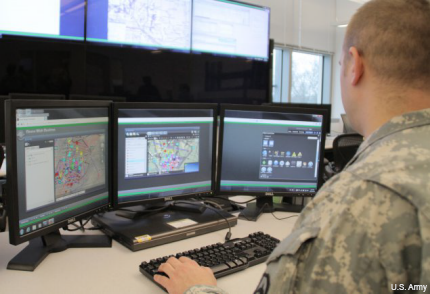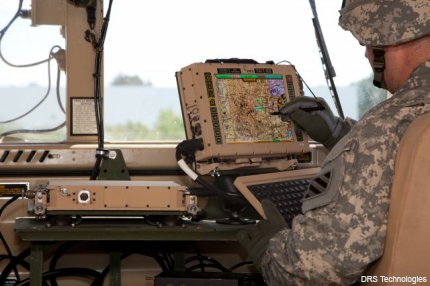Army gets tactical comm closer to the smartphone experience
The Common Operating Environment’s map-based apps and common look tie together the command, mounted and handheld platforms.

A soldier displays multiple applications within the Command Post Computing Environment.
The Army wants to make using its mobile applications for the battlefield more like using a smartphone—with intuitive, easily accessible apps that look and work the same regardless of the operating system or hardware platform.
And although it’s not quite there yet, leaders say the service’s Common Operating Environment has made significant strides of late, to the point where they can draw parallels between COE’s components and a smartphone/tablet/desktop arrangement.
The COE, which was established in 2010, provides secure applications across three environments: the Command Post (comparable to a desktop or laptop), the Mounted Computing Environment (like a tablet, and standard in tactical vehicles) and the Mobile/Handheld CE. Recent advances have simplified the maps, messaging and applications that are at the heart of the environment, while giving them greater interoperability, the Army said.
"Being able to plug and play, increase interoperability and work seamlessly -- based on common standards -- really will improve the way the Army conducts operations while in garrison and deployed,” Army CIO/G6 Lt. Gen. Robert S. Ferrell said in a report on the Army’s website.
Applications for the COE are layered onto geospatial maps that appear the same regardless of the platform and are designed to improve situational awareness. "All of combat is map-based: you have to know where you are, where you're going, where the enemy is based, and you have to see the same picture," said Jeremy Pilkington, chief engineer for the technical management division of project manager for Mission Command. "That was a key part of implementing the Common Operating Environment."

A soldier accesses the Mounted Family of Computer Systems from a tactical vehicle.
Having a common look and computing environment lets the Army eliminate stand-alone systems and saves commanders from having to synthesize information from multiple systems, officials said. Users might not all need the same applications depending on where they are—in the field with a handheld or at a command post, for instance—“but just like the commercial model, they would be compatible and interoperable," said Lt. Col. Michael Olmstead, product manager for the Joint Battle Command-Platform (JBC-P ) system.
The Mounted Computing Environment uses the new Mounted Family of Computer Systems, a single hardware configuration for vehicles that reduces size, weight and power requirements.
Developers also are working on improving interoperability with the Army’s new Android capabilities, such as those used in the Nett Warrior program, which uses Android phones that are stripped down and tailored for secure mission applications. In February, the bought 7,000 Samsung Galaxy Note II smartphones to add to Nett Warrior.
Project leaders say there are still some technical, security and other hurdles to clear before mobile communications in the field emulates the commercial smartphone environment many young service people got used to growing up. But the recent additions of a common look and common apps are getting the Army closer.
NEXT STORY: Navy forms team to boost shipboard cybersecurity



